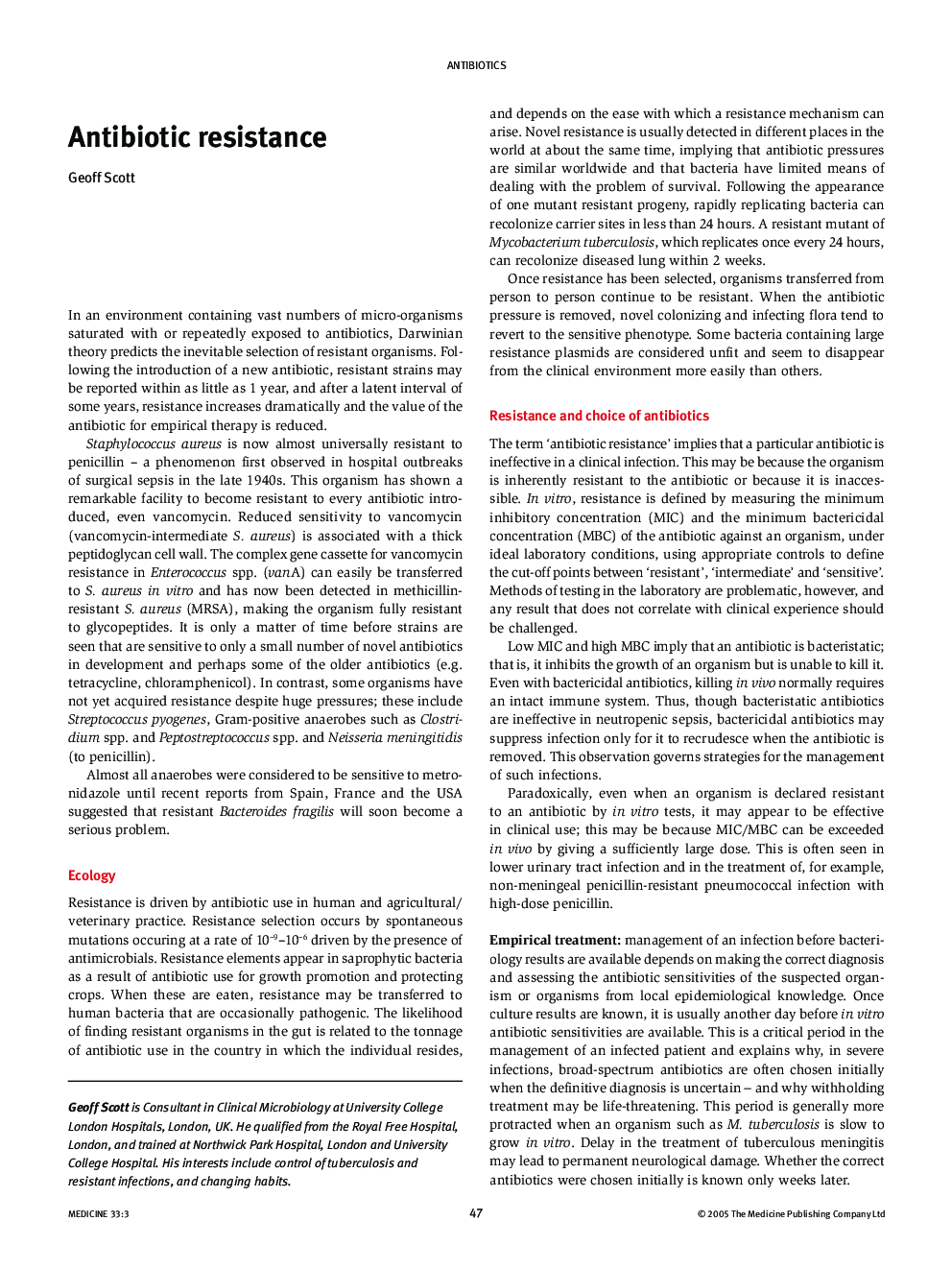| Article ID | Journal | Published Year | Pages | File Type |
|---|---|---|---|---|
| 9299693 | Medicine | 2005 | 5 Pages |
Abstract
If there were no antibiotic resistance, there would little need for microbiology laboratories. Faced with a patient who has a community-acquired or hospital-acquired infection, the doctor must guess the diagnosis, the likely organisms and the likely sensitivity of these bacteria. If Staphylococcus is grown from a blood culture, there is now a likelihood of more than 50% that it will be resistant to flucloxacillin. This means that doctors often prescribe glycopeptides empirically to ill patients before antibiotic sensitivities are known. Overuse and persistent use of the latter have led to the gradual emergence of glycopeptide-resistant staphylococci. Similarly, there is no way to predict the sensitivities of Gram-negatives, and multiply-resistant enterobacteriaceae are circulating in the community. Whereas there is a good range of newer antimicrobials for Gram-positives, there is no such development for Gram-negatives and we are now more often encountering untreatable infections. Major problems worldwide are occurring with penicillin-resistant pneumococci, methicillin-resistant staphylococci, glycopeptide-resistant enterococci, resistant tuberculosis and multi-drug-resistant Gram-negatives. However, the risk of each of these varies widely between units and countries.
Keywords
Related Topics
Health Sciences
Medicine and Dentistry
Medicine and Dentistry (General)
Authors
Geoff Scott,
